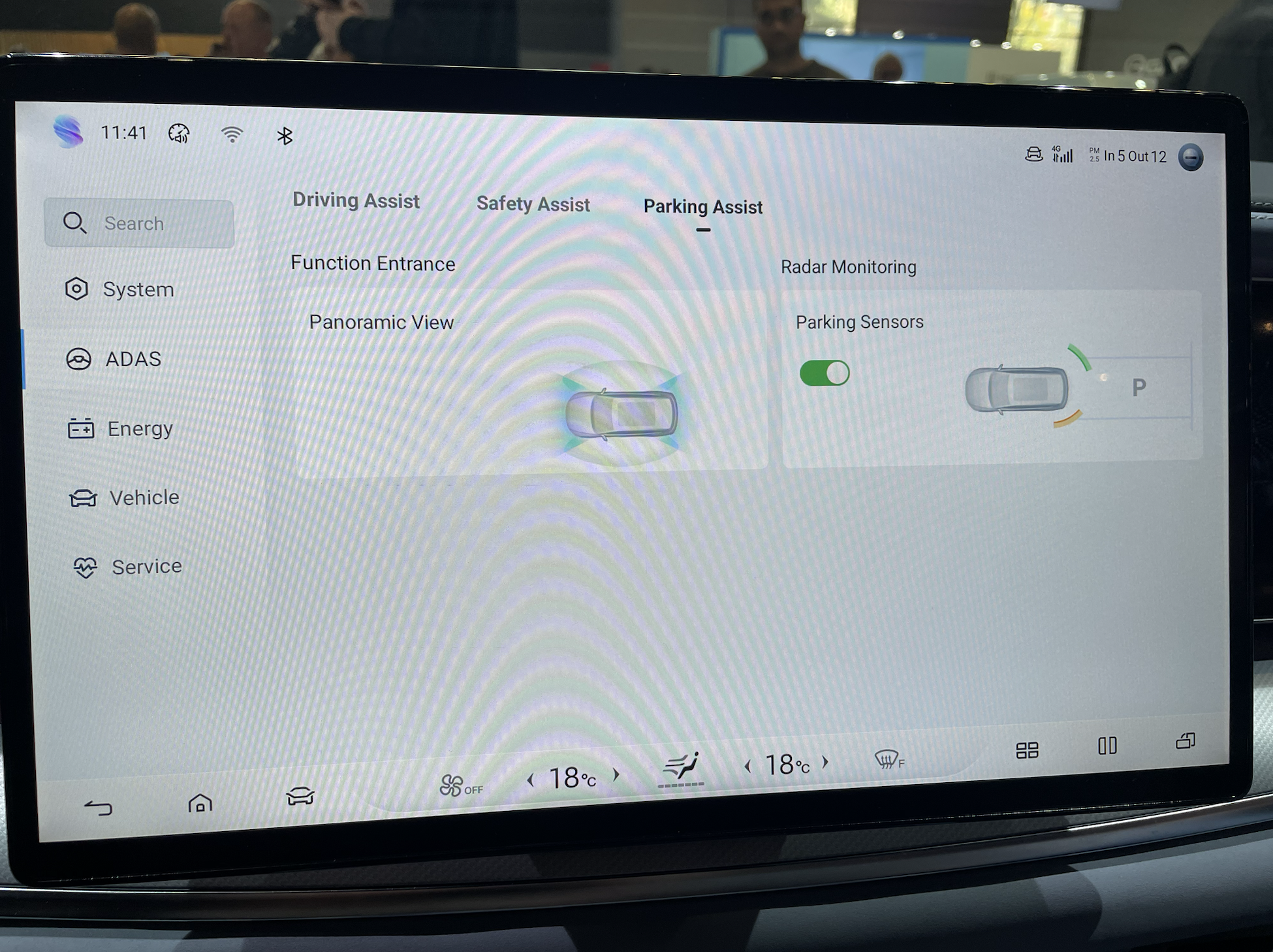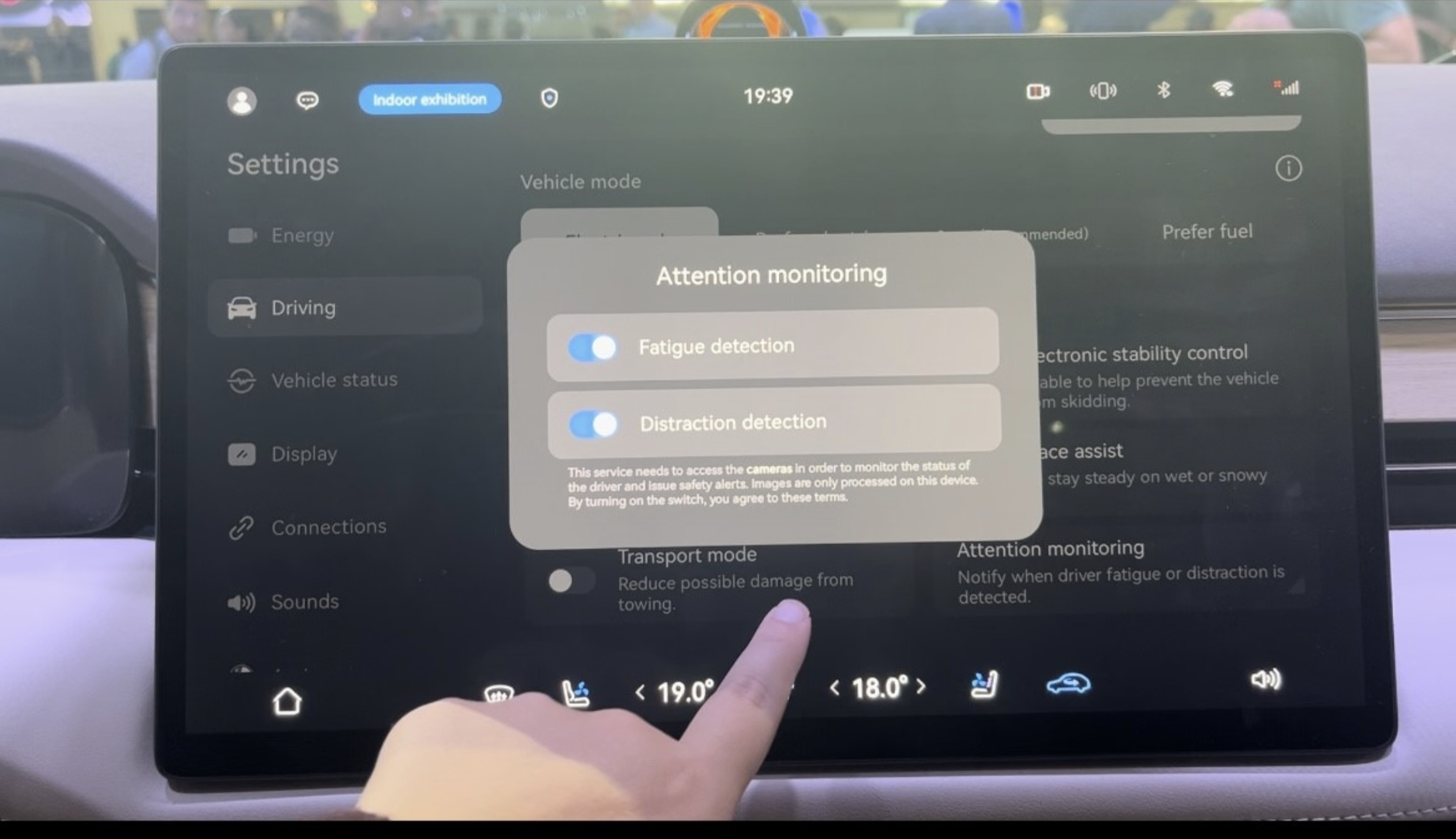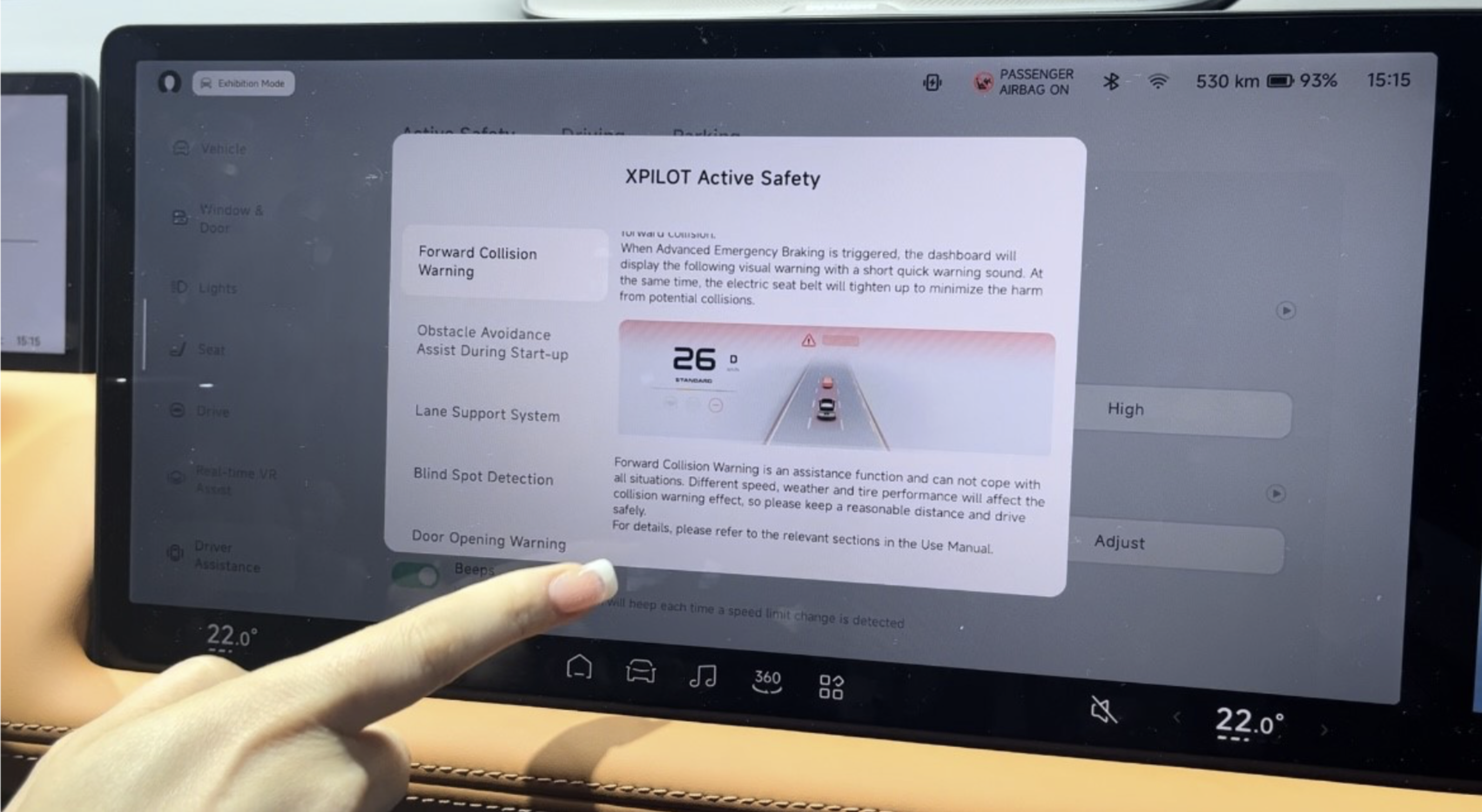This report by Melissa Agosta shares key insights from the Paris Motor Show, which she attended with Sara Sargent shortly after AutoSens and InCabin Europe. Through their observations, Melissa has crafted a unique perspective on the cognitive implications and contributions of Chinese automotive companies like BYD, HONGQI, and XPENG to the advancements in ADAS, showcased at the event. Core topics include Multiple Resource Theory (MRT), automation risks, and the role of selective attention in supporting driver awareness.
My Introduction to Sense Media
Since joining Sense Media and embarking on a journey into the world of automotive technology, I have observed the profound impact of Advanced Driver Assistance Systems (ADAS) and driving technologies on both driver behavior and safety. With my background in Psychology, Human Behavior, and Neuroscience, I will provide a human-factor perspective on advancements in automotive technology. The implementation of these systems has reached remarkable levels, and this report briefly examines how ADAS influences attention, perception, and the overall functioning of the human brain in relation to driver safety, particularly through the lens of how OEMs are implementing and displaying these systems within their vehicles at large-scale car shows like the Paris Motor Show.
Cognitive Implications: The Multiple Resource Theory and Selective Attention
From a psychological standpoint, ADAS systems engage the brain’s cognitive functions in complex ways. They reduce the cognitive load on drivers by automating certain tasks and allowing individuals to focus their attention on other critical aspects of driving. The understanding of attention theory within psychology offers essential insights into how drivers interact with these systems and helps optimize ADAS design to enhance road safety effectively.
Selective attention is the cognitive process that enables individuals to focus on a specific piece of information or task while ignoring other, potentially distracting stimuli. In a driving context, this principle is vital as it allows drivers to prioritize immediate, high-stakes information, such as traffic signals, surrounding vehicles, and pedestrians, while ignoring less relevant distractions like background noise or scenery. Selective attention is limited, however, meaning that people can typically concentrate on only a few key stimuli at once. This limitation can create challenges when additional distractions—such as in-car controls—compete for a driver’s focus, potentially leading to delayed responses to critical situations.

Executive function encompasses cognitive processes such as problem-solving, task flexibility, planning, and decision-making. In the context of driving, executive functions allow drivers to assess road conditions, anticipate potential hazards, and make quick decisions to ensure safe navigation.
Role in ADAS:
- Decision-Making Assistance: ADAS can supplement the driver’s decision-making process by alerting them to potential risks (e.g., lane departure warnings, forward-collision warnings) or even intervening when the system detects imminent danger.
- Cognitive Load Management: By taking over routine tasks (e.g., adaptive cruise control, automatic emergency braking), ADAS can reduce the cognitive load on the driver, allowing their executive functions to focus on higher-level tasks like route planning and monitoring unexpected events.
- Human-Machine Interaction (HMI): ADAS systems designed with an understanding of executive function are better able to prioritize alerts and assistance to avoid overwhelming the driver, improving the driver’s ability to respond appropriately.
Multiple Resource Theory (MRT) suggests that humans have multiple, somewhat independent pools of cognitive resources that they can allocate across different types of tasks. Each resource pool caters to a specific modality (e.g., visual, auditory, spatial). In situations where tasks draw from different resource pools, individuals are more likely to perform them simultaneously without significant interference. For instance, listening to GPS directions (auditory) while monitoring road conditions (visual-spatial) may be manageable. However, engaging in tasks that pull from the same resource pool can lead to significant cognitive overload, as both tasks demand visual and spatial resources.
When we attempt to divide our attention within complex spatial conditions, such as navigating a busy construction zone or a town environment, a driver can experience cognitive overload due to the simultaneous processing of multiple spatial cues. These settings can involve reduced lane width, frequent lane shifts, high-density traffic, and numerous visual stimuli, such as temporary road signs, flashing electronic warnings, and physical barriers like cones and construction vehicles. Additionally, the presence of pedestrians and construction workers near the roadway, along with sudden movements from other drivers, requires the driver to rapidly adjust their focus and decision-making.
This influx of spatial information relies on our ability to divide our attentional state, where struggles to prioritize essential tasks—such as maintaining lane position, monitoring other vehicles, and responding to speed limit changes—increase. The mental demands of processing these cues in real-time likely increase cognitive load beyond optimal levels, potentially impairing the driver’s situational awareness and reaction time. This example demonstrates how high-demand, rapidly changing environments can produce cognitive overload, which may lead to delayed reactions, reduced accuracy in judgment, and an increased risk of error.
Complementing Human Capabilities for Safer Roads
By automating these tasks, ADAS reduces the cognitive load on the driver, allowing them to focus on primary tasks that require attention, such as observing traffic signals and adjusting to changing road conditions. However, selective attention theory also highlights a potential risk: automation can lead to “attention tunneling,” where drivers may rely too heavily on ADAS and become less vigilant in monitoring their surroundings. This effect may lead to slower reaction times if the system fails or encounters unexpected situations.
However, the effectiveness of these systems also raises concerns regarding attention and perception. The human brain is adept at processing information from the environment, but reliance on ADAS can lead to decreased vigilance. We could suggest that when drivers feel over-reliant on these systems, their ability to perceive hazards may diminish. It is crucial, therefore, for manufacturers to develop user interfaces that keep drivers engaged and aware, striking a balance between automation and active participation.
ADAS and Its Cognitive Implications
ADAS includes a variety of features designed to enhance driving safety and convenience, such as adaptive cruise control, lane-keeping assistance, and automated emergency braking. Chinese automotive companies such as BYD, Hongqi, and Xpeng exemplify how ADAS technologies can be effectively integrated into consumer vehicles.
BYD, for instance, has made significant strides in developing comprehensive ADAS that incorporate advanced sensors and artificial intelligence. Their vehicles utilize this technology to monitor driver behavior and adapt the driving experience accordingly, ensuring optimal safety with greater control over internal settings.
Hongqi, a luxury brand under FAW Group, is also leading the charge with its high-end models that feature robust driver assistance technologies. Their systems are designed not only to improve safety but also to enhance the overall driving experience, making it more intuitive and responsive to human needs. At events like the Paris Motor Show, these companies highlight their commitment to blending innovative technology with human-centered design, appealing to both the emotional and rational aspects of consumer decision-making.
Xpeng has made a concerted effort to guide consumers through their ADAS systems with user-friendly visual tutorials. This approach not only helps demystify the technology for users but also addresses potential cognitive overload by providing clear, step-by-step instructions. By utilizing user engagement, they ensure that drivers are well-acquainted with the capabilities and functions of their vehicles. This focus on user education is crucial for maximizing the effectiveness of ADAS and promoting safe driving practices.
The integration of ADAS and driving technologies by Chinese OEMs represents a significant evolution in the automotive industry. By understanding the psychological implications of these systems, we can appreciate how they enhance safety and the driving experience. Attending the Paris Motor Show has highlighted that bridging the gap between technology and consumer awareness is crucial for fostering trust and acceptance of these innovative systems. It is a unique opportunity to engage with consumers, showcasing not only the technical capabilities of ADAS but also the real-world benefits they provide. As consumers become more educated about the benefits and functionalities of these systems, they are more likely to view them as essential components of modern vehicles rather than optional extras. This shift in perception can lead to a more informed customer base that actively seeks out vehicles equipped with ADAS, thereby encouraging manufacturers to continue investing in and enhancing these technologies.
It has been inspiring to see the technology being implemented by OEMs, and specifically the advancements by Chinese OEMs, which is why our flagship AutoSens China 2024 Event is the place to be this year (Hefei, China, 19–21 November).
Make sure to check out the AutoSens China 2024 Technical Agenda. Secure your event pass here!
AutoSens China will be followed by CES in January, where Sara and Kayleigh will attend Media Days and media tours to share their insights on the newest tech for our industry in 2025. If you’ll be there, let Kayleigh know at [email protected].












